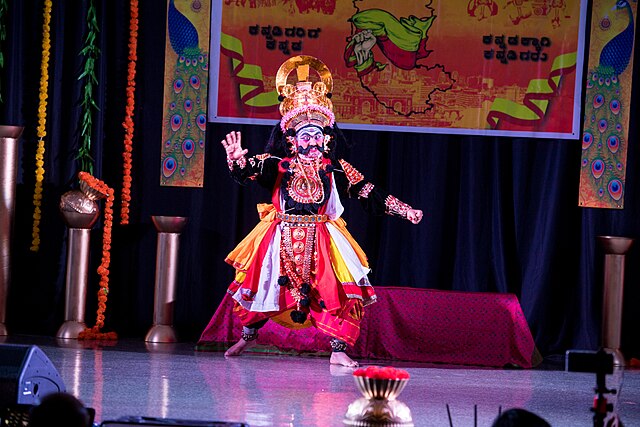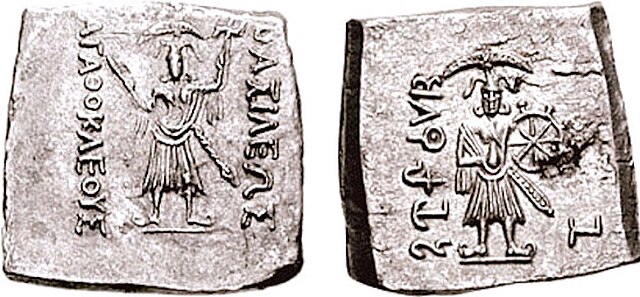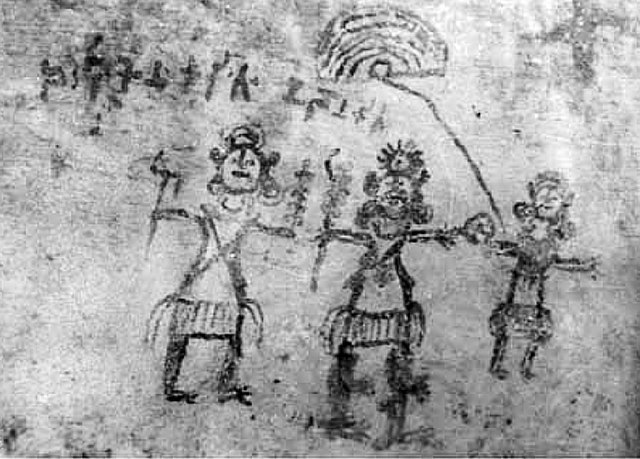Kamsa was the tyrant ruler of the Vrishni kingdom, with its capital at Mathura. He is variously described in Hindu literature as either a human or an asura; The Puranas describe him as an asura, while the Harivamśa describes him as an asura reborn in the body of a man. His royal house was called Bhoja; thus, another of his names was Bhojapati. He was the cousin of Devaki, the mother of the deity Krishna; Krishna ultimately fulfilled a prophecy by slaying Kamsa.
Krishna slays Kamsa.
Kamsa as depicted in Yakshagana, a traditional Indian art form from southern state of Karnataka
A frightened Kamsa (left) looks up to the goddess, as she issues the warning.
Krishna kills Kamsa
The Vrishnis were an ancient Vedic Indian clan who were believed to be the descendants of Vrishni. It is believed that Vrishni was the son of Satvata, a descendant of Yadu, the son of Yayati. He had two wives, Gandhari and Madri, not to be confused with Gandhari and Madri from the Mahabharata. He has a son named Devamidhusha by his wife Madri. Vasudeva, the father of Krishna was the grandson of Devamidhusha. According to the Puranas, the Vrishnis were residents of Dvaraka.
"Vrishni heroes" on the coinage of Agathocles of Bactria, circa 190-180 BCE: Samkarshana-Balarama, with Gada mace and plow, and Vāsudeva-Krishna, with Shankha (a pear-shaped case or conch) and Chakra wheel. This is "the earliest unambiguous image" of the two deities. Another variation [1].
Vrishni triad shown in a rock painting at Tikla, Madhya Pradesh, 3rd-2nd century BCE. These would be Saṃkarṣaṇa (with plough and mace), Vāsudeva (with mace and wheel) and a female deity, probably Ekanamsha.






